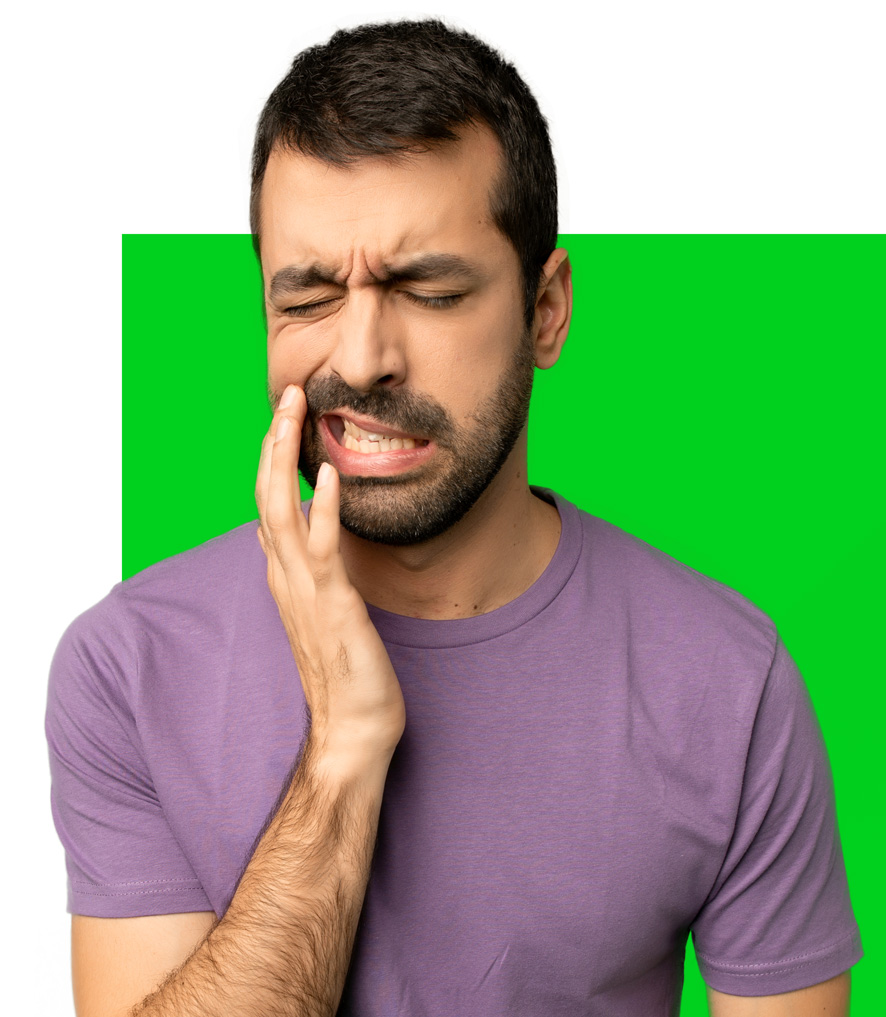What is the Temporomandibular Joint?
It is a joint which connects the jaw bone with the base of the skull. It has a hinge-shaped action, which allows the mouth to be opened and closed just in front of the ear (See Image).

What is the Temporomandibular Joint Dysfunction?
Currently, there is scientific evidence which shows that this condition is more common in female patients between the ages of 20 and 40. It manifests itself when there is inflammation or wear of the structures within the joint which limits or impairs the opening and closing of the mouth when speaking, yawning, chewing or swallowing. Temporomandibular joint dysfunction can affect one or both sides, as well as nearby muscles, causing pain, tension, and inflammation.
The most common cause of this condition is constant grinding, gnashing, or clenching of the teeth (also known as bruxism). Bruxism may happen unconsciously, when you are awake, or when you sleep. The constant movement of the joint not only inflames or erodes the structures of the joint, it also produces a noticeable wear of the teeth (see image).

Salud, O. (2021, January 5). What is bruxism? Symptoms and treatment. https://odontologiasalud.blogspot.com/2009/03/que-es-el-bruxismo.html
What are the symptoms?
The most common symptoms are:
- Pain in the affected jaw or in the joint area (just in front of the ear) at rest or movement (eating, speaking, yawning, etc).
- Pain on one side of the face or in the jaw in front of the ear or on the affected side.
- Headache (particularly in the morning)
- Pain or limitation when opening the mouth.
- Ear pain
- 'Click' when opening and closing the mouth.
- Pain on one side of the face or neck.
- Feeling of blocked ear or dizziness.
How is Temporomandibular Joint Dysfunction diagnosed and treated?
It is important to see a specialist (otolaryngologist) when having discomfort or pain in the jaw or in the joint area (just in front of the ear) at rest or movement (eating, speaking, yawning, etc.), which it does not improve with conventional analgesic treatment.
During the consultation, the specialist doctor will not only take note of your important medical history, he will also examine your ear and jaw region in order to diagnose the cause of your condition. It is important to emphasize the importance of going to a specialist doctor since due to pain in the ear region caused by an inflamed temporomandibular joint, it is common for it to be misdiagnosed and treated as an ear infection.
Treatment can vary depending on the severity of symptoms and damage to the temporomandibular joint. It is advisable to start with conservative treatment:
- Application of local heat with a towel moistened in warm / hot water and massage in the affected temporomandibular region several times a day.
- Avoid hard foods that put additional pressure on the joint, opt for foods with a soft consistency.
- Restrict the opening of the mouth when biting food, chewing, talking or yawning.
- Reduce stress (meditation, yoga, deep breaths, improve sleep habits, aerobic exercise, etc.), as well as be aware of when we clench or grind our teeth and avoid it whenever possible.
- In severe cases, it will also be necessary to take anti-inflammatory drugs with or without a muscle relaxant.
Your doctor may also assess the need to treat your case together with a:
- Psychologist or psychiatrist to improve stress or anxiety management.
- Dentist to assess the condition of your teeth and evaluate the use of a dental guard to control involuntary movements of the teeth during sleep.
If you have noticeable improvement from medical treatment, your doctor may suggest surgical treatment. There are several techniques and they vary depending on the cause and severity of the temporomandibular dysfunction; your doctor will recommend the best treatment for you.
The decision to have any surgical procedure should be after the surgeon knows all the patient’s medical history and has fully explained as well as discussed the surgical procedure, possible complications and risks.
* This information does not take the place of your doctor's advice. Please consult your healthcare provider for information about a specific medical condition.
References
Cope, G., & Cope, A. (2011). Diagnosis, treatment and management of TMJ disorders. Dental Nursing, 7(12), 682–686. https://doi.org/10.12968/denn.2011.7.12.682
Flint, P. W., Flint, P. W., & Cummings, C. W. (2020). Cummings otolaryngology: head and neck surgery; Chapter 89: Temporomandibular Joint Disorders (7th ed., Vol. 2). Elsevier.
What is TMJ? Mountain Ear Nose and Throat Associates. (n.d.). https://mountainent.com/blog/what-is-tmj.











